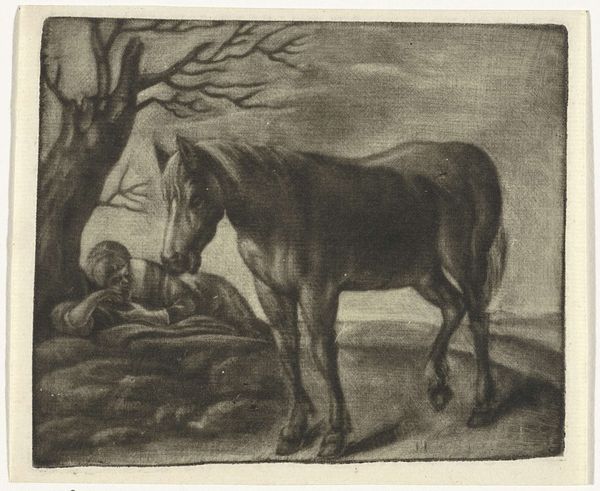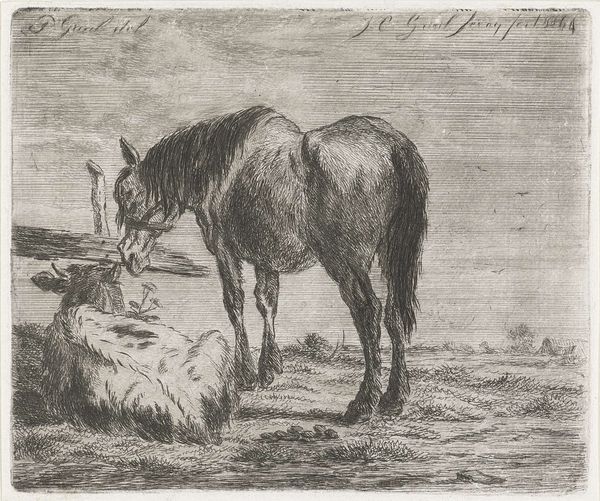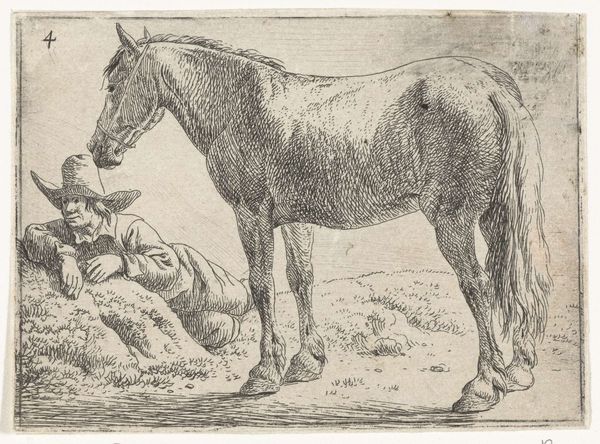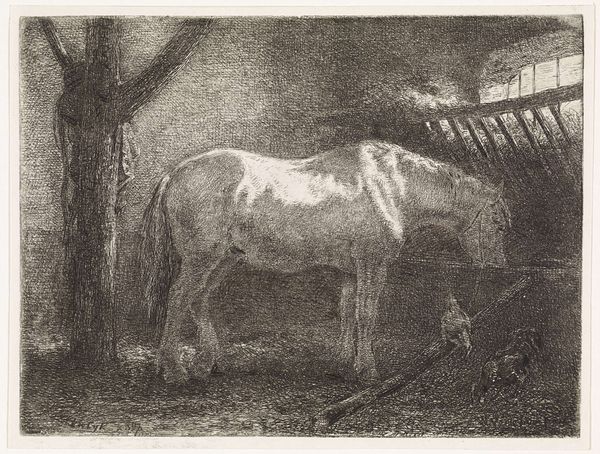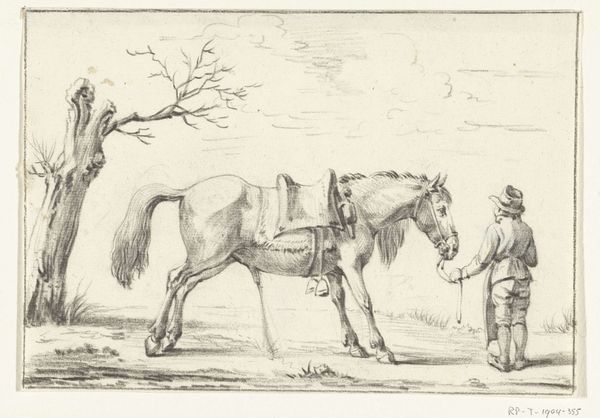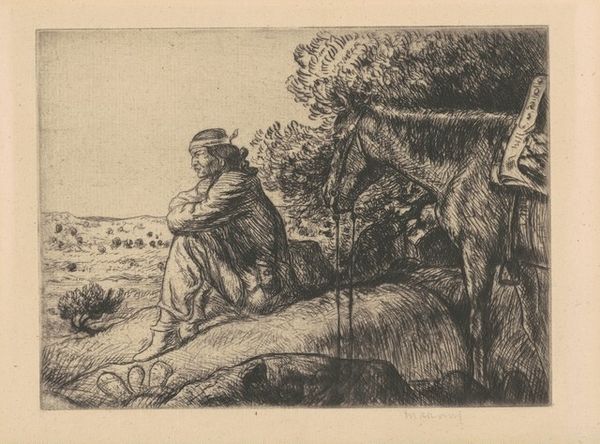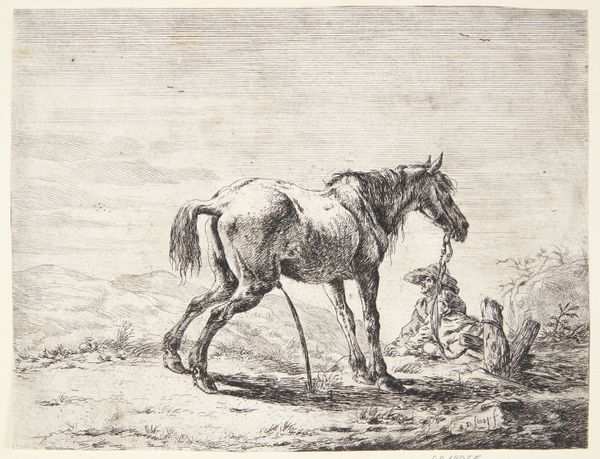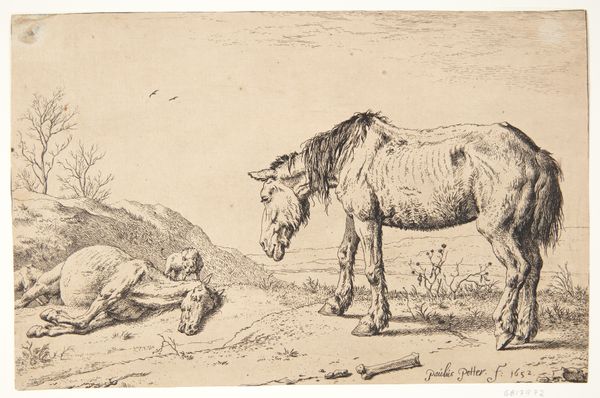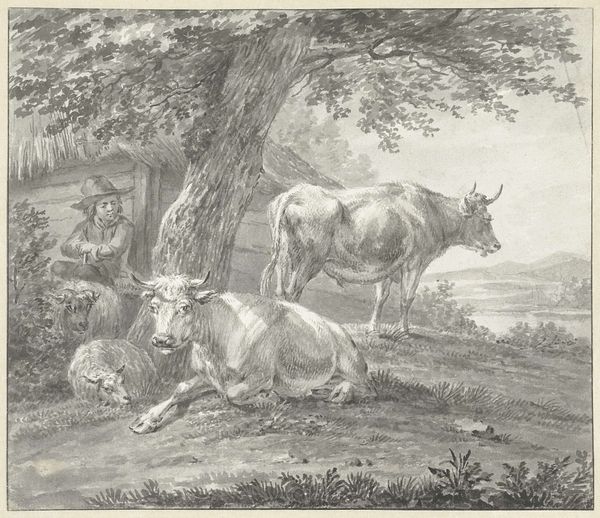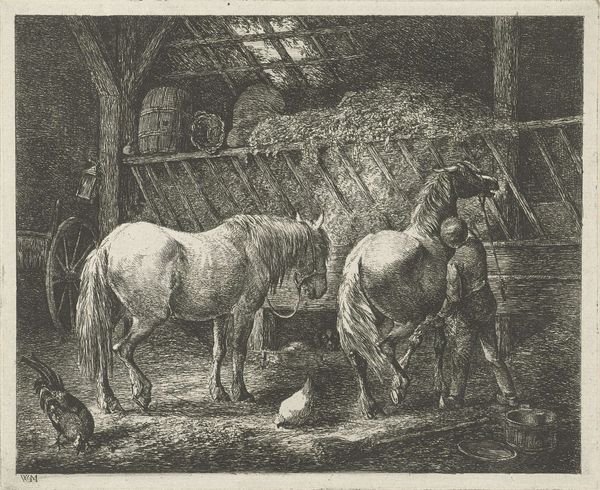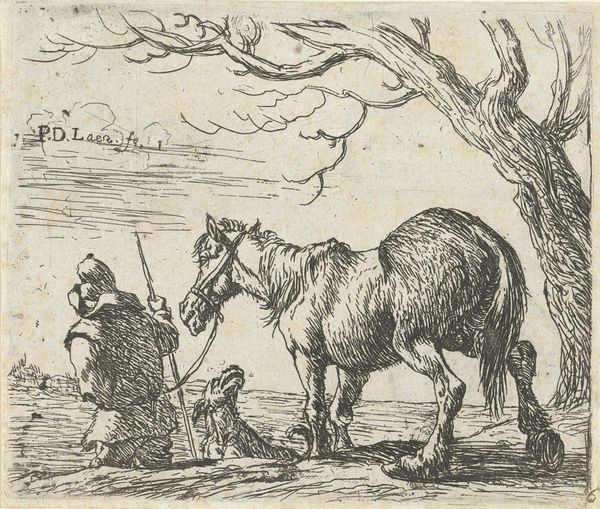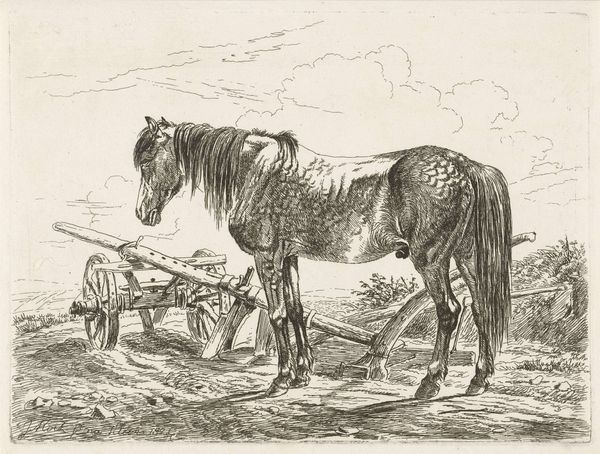
drawing, graphite
#
drawing
#
baroque
#
landscape
#
graphite
#
genre-painting
Dimensions: height 125 mm, width 166 mm
Copyright: Rijks Museum: Open Domain
Curator: So here we have Dirk Koedijck’s graphite drawing from 1730, "Landscape with a Horse and a Sleeping Woman.” What catches your eye right away? Editor: Melancholy, certainly. The tonality—it’s almost ghostly. The subject matter seems like it's about quiet desperation or simple abandonment. Curator: Right! Notice how the graphite is worked – the subtle hatching creates these gradations of light, very soft edges. How do you think the material itself shapes the work's reception? Editor: Well, Koedijck wasn't after the vibrant colors of oil; he chose a medium that mirrored his subject matter: Graphite allowed for those faded grays and whites, like worn fabric. It fits within that baroque period trend that favored more subtle aesthetics. It invites contemplation, suggesting labor and material scarcity. Curator: Absolutely. Also notice the composition. The horse looms large in the foreground, acting almost as a guardian for the woman sleeping at the foot of the tree. The scale feels intentional. There is intimacy but also the vast landscape that emphasizes the woman's loneliness and destitution. Editor: That landscape is crucial, it highlights this interplay of protection and isolation that is enhanced by how the material looks in the setting it attempts to portrait. Do you think Koedijck romanticizes that poverty or attempts to reveal any hidden social truth? Curator: That’s the rub, isn't it? Given the period and his likely patronage, he is unlikely attempting any hard-biting criticism. But there’s an undeniable tenderness in the rendering, like he saw some deep, human beauty there. The lines of the drawing have imperfections in them, which seem honest. It avoids idealization, while avoiding complete denouncement. Editor: Well put, in all, the piece asks more questions than it answers. From technique and materiality to its stark emotional undercurrent, "Landscape with a Horse and a Sleeping Woman" still whispers to us across the centuries, doesn’t it? Curator: It does, a reminder that even in the seemingly simple genre scenes, complex emotional and social undercurrents could run deep.
Comments
No comments
Be the first to comment and join the conversation on the ultimate creative platform.
